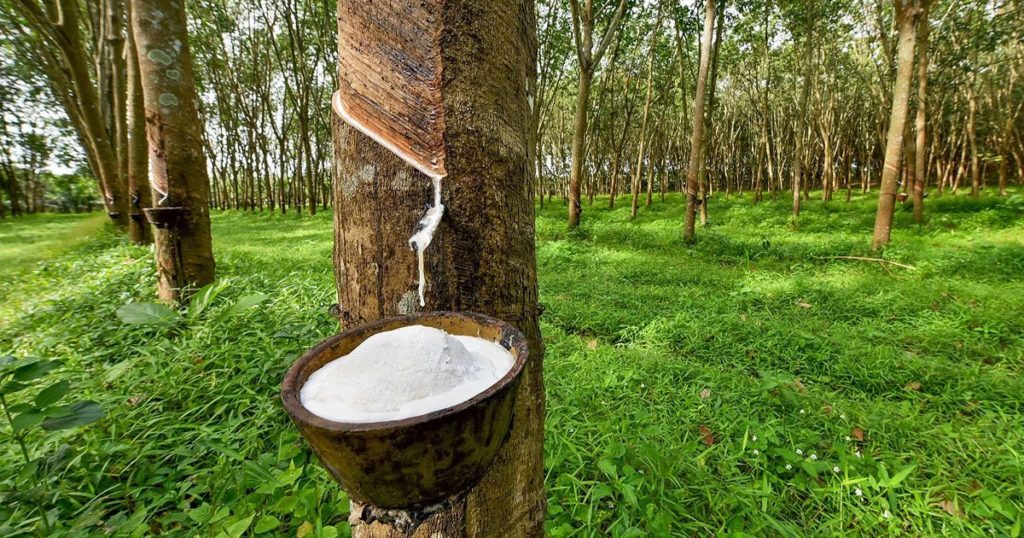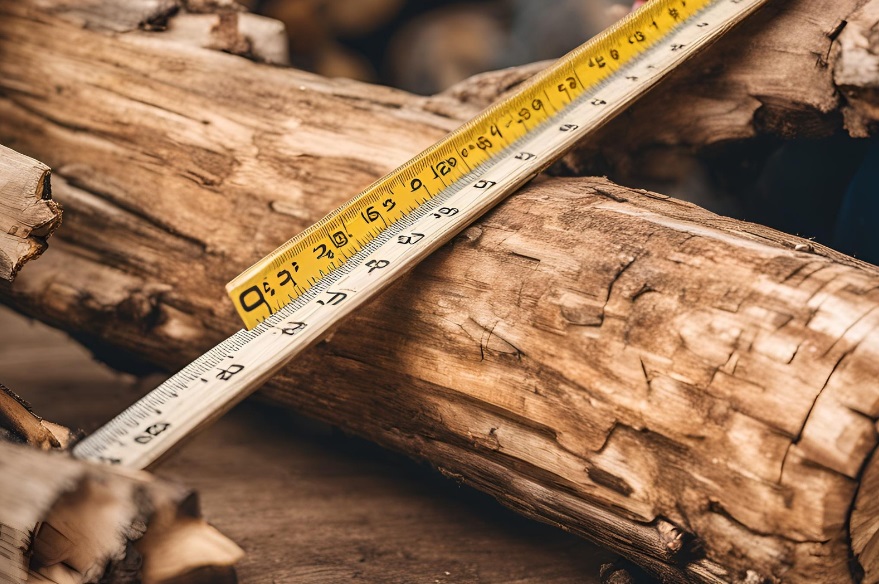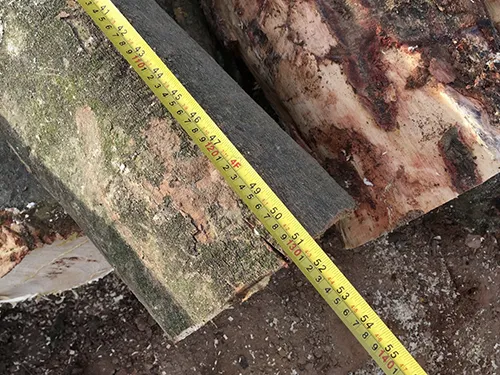PROCESS OF RUBBERWOOD TREE FALLING FROM PLANTATION
Rubberwood’s rotation time in average latex production is between 25-30
years and smallholder usually decides to sell the trunks after the latex
productivity has begun decreasing significantly. At this age the average height
of the trees is 25 meters and average log size is 0.63 m3 of stump wood

By felling the rubber trees of 1 rai, it will give approximately 30 tons of logs.
Most of log are sent to sawmills or rubberwood processing plant. The logs are cut to obtain sawn timber. The wastes from cutting are “slab” and “sawdust”.
In general, the slabs produced is about 40% of logs, thus give 12 tons of slabs.
Sawdust produced is 10% of logs, thus gives 3 tons of sawdust.
This production rate is inversed to the size of logs. 30% percent of slab and sawdust are used in-house in the drying process of sawmill so 70% of slabs and sawdust will be available to sell.
FALLING OF RUBBERWOOD TREES



The retired rubber trees can be felled into two ways:
(i) cutting above the stump
(ii) uprooting the stump.
The first method uses a chainsaw to cut the trees but leaving the stumps under the soil.
The second method uses a tractor to push and pull the rubber trees until their stumps are removed
from the ground.
The second method will give more rubberwood biomass than the first method but will cost about 10%–20% more than the first method.
The trunks of at least 6 inches in diameter are
then cut 1.05 metres long, so-called ‘rubberwood log’.
Small trunks of less than 6 inches in diameter
are also cut into small pieces, so-called ‘rubberwood offcuts.
Both rubberwood types are processed by the manufacturing sector
TYPES OF SAWNLOGS

OFFCUTS



